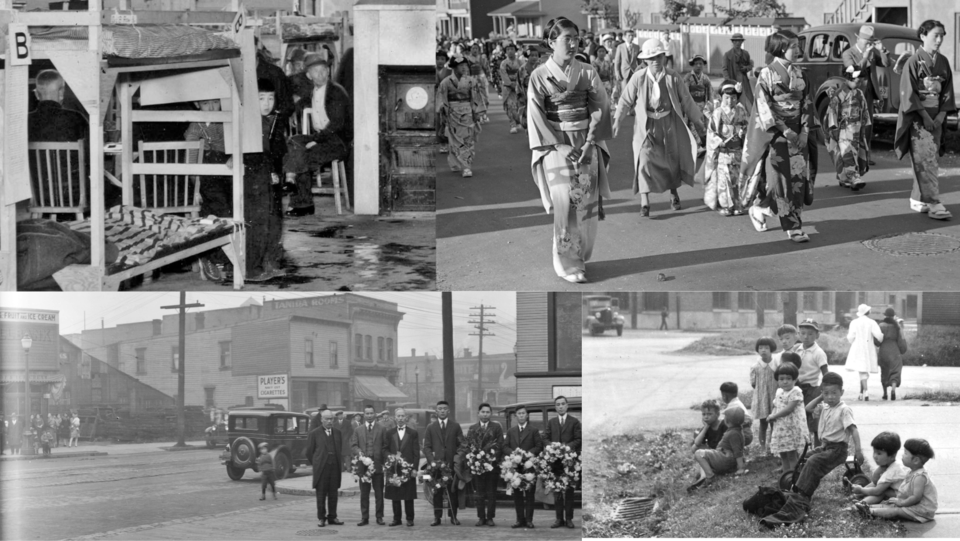Vancouver, like most big North American cities, has a few districts with specific ethnic histories.
Most famous is Vancouver's Chinatown, but there's also the Punjab Market, Little Italy on Commercial Drive, and the Greektown part of Kitsilano.
And there's (what's sometimes known as) Japantown. It has also been called Little Tokyo or Paueru-gai (Powell Street in Japanese). With a history of receiving immigrants from the island nation stretching back to the 1870s, at one time it was the third-largest Japanese community in Canada, despite and open discrimination.
It was also the home to , a legendary local baseball team that disbanded during a dark moment in Canada's history.
Nowadays the term Japantown isn't common, but can be seen in some places, notably Google maps. There's also the which honours the neighbourhood's history. However, that bustling community that existed for decades is no longer there, thanks to racist policy and xenophobia.
Here are five facts you probably didn't know about the neighbouthood known as Japantown, Little Tokyo, Paueru-gai or Powell Street.
1. At one point there were nearly 600 Japanese businesses there
It was a major centre for not just Vancouver's Japanese population, but Canada's, with thousands living within a short walk to the community's centre.
"Katsuyoshi Morita recalled that in 1920 the buildings along Powell Street “' looked no different from those in the neighbourhood, but once you stepped in, it was totally Japanese ...[and] had everything that one needed and it was always filled with Japanese people,'" reads a city report on the history of the neighbourhood.
Paueru-gai, given the discrimination by white settlers in the area, became one of the more accepting neighbourhoods in the area as well, with people of many nationalities living or frequenting it.
"First Nations men patronized the 'clean rooms'...because other parts of the city posted signs 'No Indians Allowed,'" notes the report, as one example.
2. First Buddhist temple was established in Canada
With the size of the community it may not come as much of a surprise that the first Buddhist temple in Canada was in Vancouver.
In arrived, of the Jodo Shinshu sect, and within a couple of years a physical temple was built on Alexander Street.
It closed when all Japanese-Canadians were interred during WW2; in the 1950s the community reorganized and created the Vancouver Buddhist Temple.
3. Internment camps ended it
During World War 2 the , despite a total lack of evidence, Japanese Canadians were targeted in the War Measures Act.
As part of it, thousands of people of Japanese ancestry, including people born in Canada and men who had fought for Canada in WW1 were forcibly moved from B.C.'s coast to internment camps, starting in 1942. It wasn't until 1949 that all restrictions were lifted.
Another part of the act allowed the federal government to seize and sell property owned by Japanese Canadians. This included land and fishing boats; some land was given to veterans of the war returning home.
This effectively ended Vancouver's Japanese community. While the war ended in 1945, it would be years until all restrictions were lifted, and prior to that many were forced to go back to Japan or move to the eastern sides of the Rockies, including Toronto.
Some did move back to Vancouver, and the Powell Street area, but owned no property there. There were other issues as well, including the disrepair and industrialization of the area.
4. The first Vancouver restaurant to sell raw fish
While sushi and raw fish are a significant piece of Vancouver's culinary world now, back in the 1960s it was unheard of...here.
So Aki Takeuchi started Aki Restaurant at 374 Powell St., one of the few Japanese businesses to return to the area post-WW2. Takeuchi had been born in Steveston prior to the war, but his family fled to Osaka just after it started. As an adult he returned to Vancouver; he was inspired to start his restaurant after a trip to San Francisco, where he was stranded and worked at a sushi restaurant.
The restaurant existed for decades, though it left the area to move to Coal Harbour. It closed in 2012 as the location it was in was redeveloped.
5. The is a national historic site
Most of Vancouver's national historic sites are pretty famous and obvious, like Chinatown, Gastown, the former law courts (now the Vancouver Art Gallery) and Stanley Park.
However, not all are so boisterous, and the Vancouver Japanese Language School is one of those. It's the first, oldest and largest Japanese language school in the country.
On top of that, it's one of the rare properties that, after it was taken by the federal government from Japanese-Canadian in the 1940s, was given back.
"The Vancouver Japanese Language School is one of the few known properties to have been returned to its owners after the period of internment," states the 2019 Parks Canada press release announcing the school would be designated a National Historic Site.




